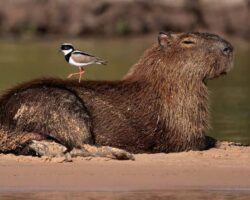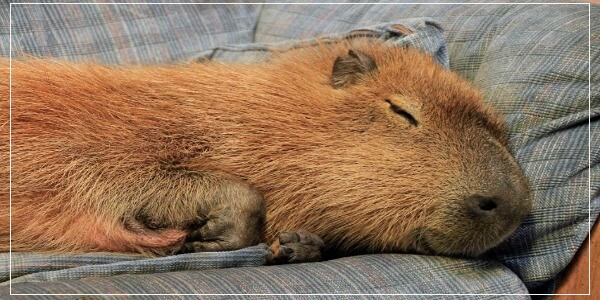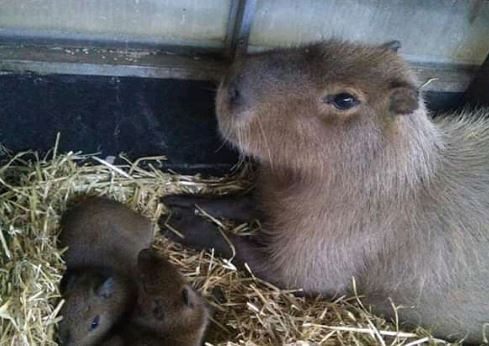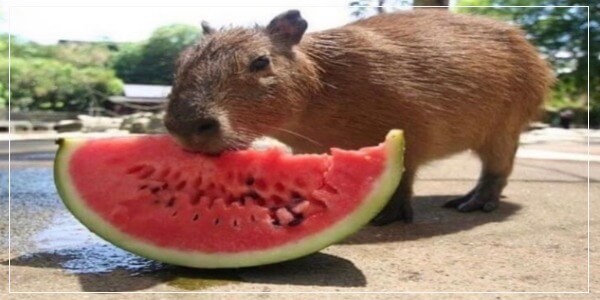The short answer is, yes they do but they don’t come in many variants like dogs. And they are not so distinct from each other so it could be hard to notice their little polarities.
The capybara comes in two varieties and the key features that can be used to differentiate one from the other are their size, weight and skin complexion.
But before I go into full details about their physical attributes, let me use a few paragraphs to paint a word picture of the rodent in question.
About Capybaras

They are the largest rodents in the world. Beavers are big, but they are not proportional to the capybara. A capybara is about twice the size of a regular beaver.
They can grow up to two feet high and four feet long, like the size of a little human. And they weigh about forty kilograms on average. They are herbivores which means they rely on terrestrial and aquatic plants for survival.
Besides, feeding on hard plants is the only way they can control and keep their incisors within a certain length. I want you to picture their head with your mind’s eye, having those incisors hanging out like other popular rodents.
The major difference is that their own never stops growing, but the hard stuff they consume is their saving grace. Think of it as someone using sandpaper on a wooden surface to reduce the size of the wood, only that this process is much slower, laborious, and time-consuming but still effective.
Also, they consume their own excrement, but it’s just because their dietary preference normally falls between woody plants and hard stems. These are difficult to digest, and eating their feces helps them to break down and properly macerate the food so that the nutritional content can be distributed evenly. So they don’t have a choice.
Besides, they are not the only ones, there are other rodents and lagomorphs that do the same. A capybara is brown-skinned and has a big head, small ears, small pair of eyes, and a nose. The structure of their head bears a similar resemblance to that of the guinea pig.
Their nose is just above their mouths at the same level as their eyes, and this enables them to breathe freely and to be on the lookout for danger when they are in the water.
Oh, I didn’t mention, they love to swim, they spend half of their time in the water, and they are just as comfortable in the water as they are on land. But not just their love for the water draws them to it.

They are semi-aquatic, they swim for numerous reasons and they mate in the water as well. For this reason, they prefer to live close to water. Capybaras inhabit savannas, swampy areas, flooded lands, or littoral land.
They have small legs that help them run very fast, up to thirty-five kilometers per hour, which is very beneficial because carnivores like boas, jaguars, pumas, and big vultures prefer them to other animals for food.
Surviving in the wild is a hellish task for them, especially their young ones, who are always at risk of getting swallowed by boa constrictors. Now that I’ve laid the proper foundation let’s talk about breeds.
What Are The Capybara Species Out There?
There are only two species known to man that are still in existence. The reddish-brown capybara and the brown-skinned capybara. Their most distinct feature remains the fact that one comes bigger and weighs more than the other, and that’s exactly how they are classified.
The brown ones are the bigger ones. Hence they are referred to as the greater capybaras, while the reddish-brown ones are called the lesser capybaras because they are smaller in size and weigh less than the bigger capybaras.
Here is an article suggesting a new species of capybara known as the green capybara.
The Greater Capybara (Hydrochoerus Hydrochaeris)
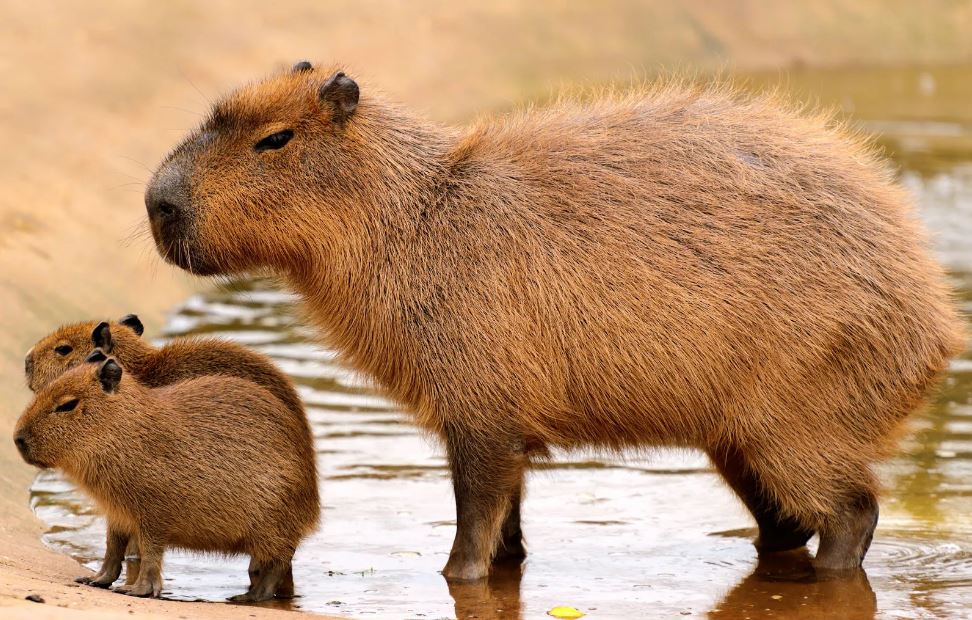
They are the bigger ones, and they can weigh up to 69kg, sometimes more. About twenty years ago, there was a greater capybara in Sao Paulo that was reported to exceed eighty kg in weight.
Such cases are exceptional, but they are still worth considering. The females usually weigh more than the males. The greater capybara doesn’t have a yen for solitary movements or lifestyle, and they love to locomote, feed and do almost everything in groups. And they usually have a leader who has first earned the right to be in the position through a fight for that spot.
Their mentality can be likened to that of wolves, the leader acts as the alpha of the team, and they can be up to forty members in a pack. They are not a threatened species.
The Lesser Capybaras (Hydrochoerus Isthmus)

They are called the lesser capybaras because they are smaller than the other species. The lesser capybaras weigh about thirty-five to forty kg. But there have also been cases where they weighed as low as twenty-eight kg.
Apart from their weight, they appear to be reddish-brown in complexion. They are semi-aquatic animals, and their habitat is usually savannas and wetlands. Unlike the other variants, they have been spotted wandering the forests alone.
They were acknowledged as a species in 1991. However, there are still some people who argue that they should be regarded as subspecies. Unfortunately, the lesser capybara is an endangered breed, as carnivores, hunters, and bush burning threaten their existence.
The lesser capybaras are consistently hunted for their expensive meat; some locals in Venezuela have reported that their meat feels like pork and tastes like fish.
Are There Different Breeds Of Capybaras?
Yes, there are. There are two species currently in existence. Scientists claim that they have evidence that there were other relatives, but they had already gone extinct by the end of the twentieth century.
We are left with just two breeds, the brown (greater) capybaras and the reddish-brown (lesser) capybaras. They both share a lot of similarities, and it could be hard for some folks to tell the both of them apart.
The major disparities between the two are that one comes bigger and weighs more than the other, and their complexion is distinguishable. The reddish-brown ones weigh less and do not grow as large as their other variants.
For this reason, they are referred to as the lesser capybaras. And the other ones, the greater capybaras.
What Is A Capybara A Mix-Off?
A capybara is a giant rodent; it is related to the guinea pig and remotely connected to rodents like the agouti, beaver, and chinchilla. It is a mammal and a herbivore.
Its scientific name is Hydrochoerus hydrochaeris, and it belongs to the family Caviidae. Only two species of it are left, the greater capybara and the lesser capybara. The two species come in different colors and sizes.
The greater capybara tends to grow to a greater extent and weigh more than the lesser capybara. Also, it has a brown skin texture, while the lesser capybara is reddish-brown, shorter, and weighs less.
Capybara Mode Of Reproduction
Capybaras like most rodents can give birth to numerous number babies from one pregnancy. With capybaras, the usual amount of offspring is eight at a go.
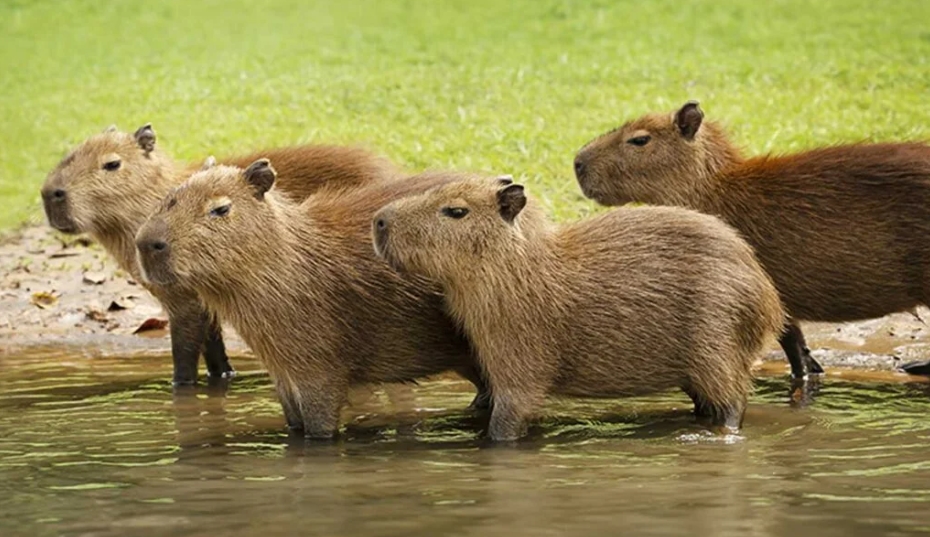
One big difference between them and most rodents is that they enjoy spending most of their time in the water. As a result, they mate there, but when it’s time to deliver, they do that on land.
Like most mammals, the mother capybara does not need any special attention when they give birth. They just stop at a place, deliver babies and rejoin the herd as fast as possible. When it is time for copulation, their females prefer to mate with the dominant alpha of the pack. As the head, it is his responsibility to satisfy all the females of the group sexually.
The only way to couple with a female in the team is to fight and defeat him. Hereby becoming the alpha of the club and the number one preference for all the females.
What Is The Average Life Span of a Capybara?
When held in captivity and properly cared for, a capybara can live for twelve years. That is when they are privileged to enjoy their lives to the fullest.
But outside in the wild, they barely make it to ten years because of many factors. If their lives are not cut short by one of the many carnivores, then one sickness or another or the fight for who will be king will ensure that they don’t make it up to five years. Or worse, humans will kill them for their meat and sell it at an expensive rate.
Currently, capybara meat is in high demand in South America. Even if they survive, they will never make it past ten years. In conclusion, the average life span of a capybara in the wild is four to seven years and ten to twelve years in captivity.
What Is The Total Population of Capybaras In The World?
Although the capybara has many carnivores out to get it, it is not a threatened species. It is impossible to determine how many capybaras there are in the world. Capybaras are native to southern America, but there have also been reports of sightings in Florida.
Not only are capybaras many, but they are also diverse creatures that can be found in various places around the globe. Also, their population is always growing because their females are always birthing every year.
So it is impossible to give the exact amount of the total population of capybaras. The best we can come up with is an estimate of the inhabitants. In 2020, there was a capybara population census, although not the first of its kind, as similar projects have been carried out in the past (1973, 1981, 1986, and 2005 respectively).
At the end of their research in 2020, the total number of capybaras was roughly calculated to be about 1,439,323,774. There are so many capybaras in the world, and according to The International Union For Conservation of Nature ( IUCN), the capybara, in general, is not an endangered species.
In fact, it is ranked among the animals that we should be least concerned about. The actual amount of the capybara remains unknown, but you can take comfort in the fact that its population is large and somewhat ubiquitous.
What Animals Are Related To Capybaras?
Their immediate families are the guinea pigs and rock cavies. There are still people who think that capybaras are just huge guinea pigs. Their distant relations are the agouti and chinchillas.
They are large rodents with pig-shaped bodies who share traits similar to beavers.
What Are Capybaras Ancestors?
Research shows that the earliest capybaras wandered the forests of Africa about eighty million years ago. And somehow found their way to South America around forty million years ago.
There have been studies that suggest that capybaras were not always this big. They became big as years passed due to evolutionary growth spurts.
Similarities And Disparities Between Capybaras & Guinea Pigs
Most people easily mistake the capybara for a guinea pig, if not an exact guinea pig, then a breed of the guinea pig. And I don’t fault them for this because if I didn’t know better, I would have thought it was a species of the guinea pig myself.
The truth is that we are not entirely wrong. They are both rodents from the same animal family, Caviidae. So they share many similarities, like a big head, small eyes, small nose, small legs, small ears, and no tail.
Also, they exhibit similar behavioral patterns, like swimming and moving around in packs. But as far as similitude goes, this is where it all ends. There are other differences and distinct physical features that you can use to identify both of them. Such as:
1. Size And Weight
Capybaras are much bigger than guinea pigs. The guinea pig does not exceed ten inches long and barely outstrips one kg in weight.
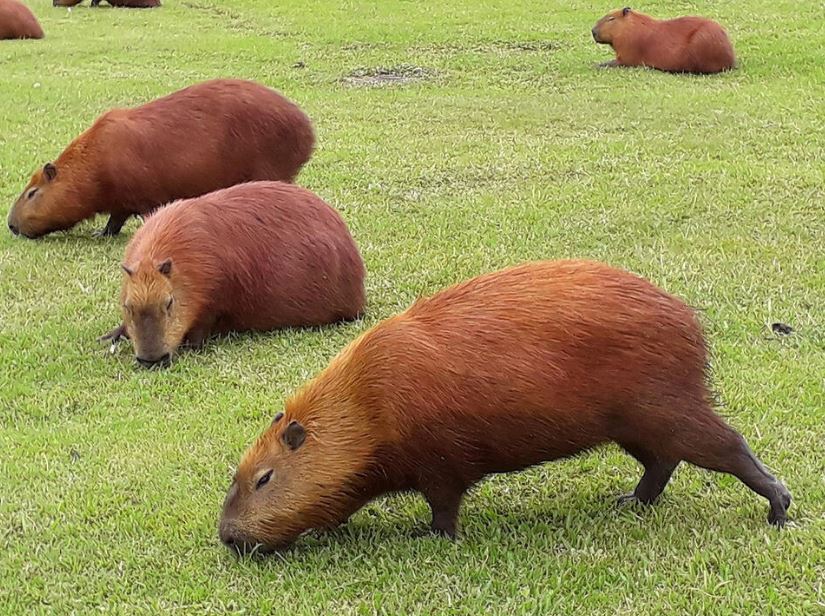
While the capybara grows as tall as four feet (sometimes more) and weighs as much as sixty-nine kg (although there have been some rare cases where capybaras weighed eighty kg and over).
2. Their Feet
The capybara’s feet appear to be webbed like those of the pelican. Their webbed feet help them swim effectively. The guinea pig, on the other hand, has no such features.
3. Habitat
The capybara loves to swim; in short, it spends most of its time in the water, and it even mates in the water. For this reason, it cannot be found in a place where it does not have access to water. You will only catch sight of a capybara around swampy areas, savannas, marshes, and flooded areas.
While the guinea pig does not have such feelings for the water, it has no problem living in a place made of solid ground. You can find the guinea pig in places such as forests, rocky terrains, caves, and other places of solid land in the wild.
Also, it is important to note that there are more undomesticated capybaras than guinea pigs and more guinea pigs than capybaras in captivity.
Is The Capybara In The Rat Family?
Yes, they both belong to the same ancestry. They are members of a class called Rodentia and a family called Caviidae.
RELATED POSTS:
Conclusion
With that, I’ve come to the end of this article; I hope it was an interesting read and you were able to find answers to your questions. Let’s go over a few points again before we go.
- Capybaras are of two species, the lesser and the greater capybaras.
- Capybaras are semi-aquatic.
- They love to move around in packs.
- They are the biggest rodents out there.
- They are herbivores who love to feed on stems and Woody plants.
Thank you, and good luck.

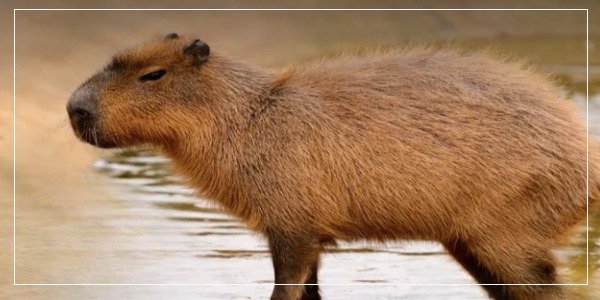

![Does Green Capybara New Species Exist?- [Answered] Green Capybara New Species](https://capybaratips.com/wp-content/uploads/2021/12/Green-Capybara.jpg)

